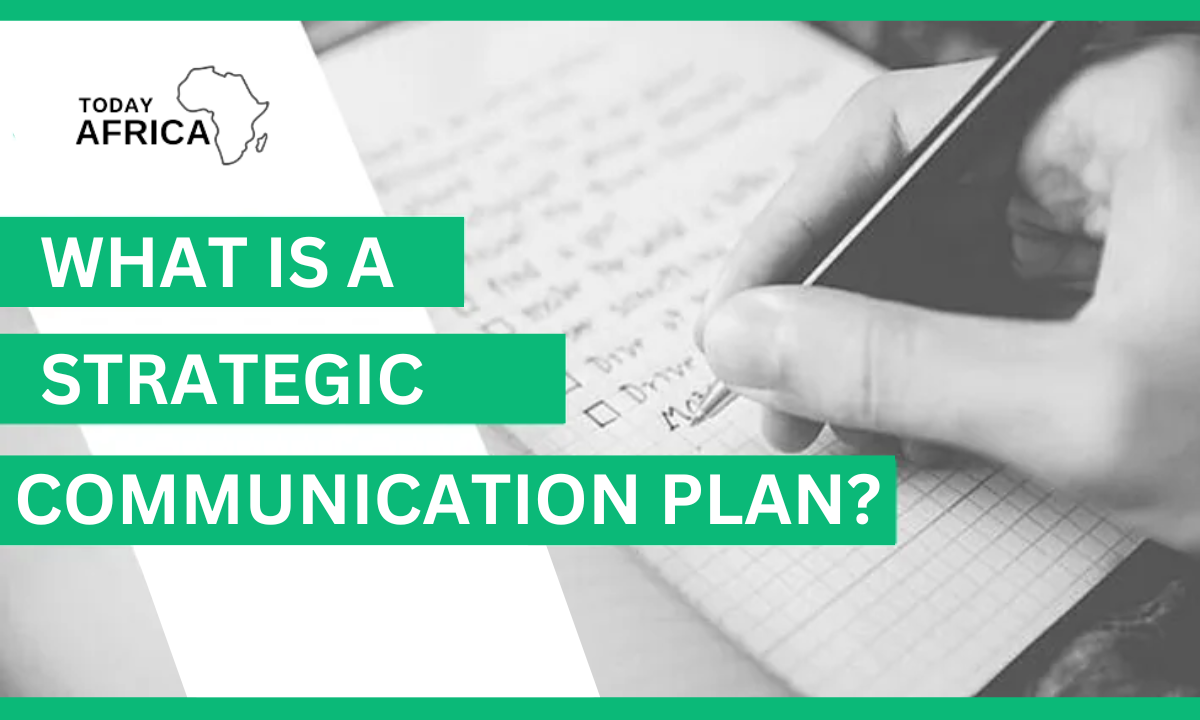The number of people using social media daily is growing, which means that companies should adapt their products and customer approach according to modern customers’ needs and requirements.
What are potential customers’ needs and requirements? Comfort and putting less effort is what they need.
Social media integration is a huge opportunity for your audience to engage and interact with your brand.
It’s becoming more likely that they will share your content and promote your products. With the help of some essential tools you’ll be able to integrate social media with your email, website, and pages on various platforms.
As you see, social media integration plays a huge role in interacting and working together with your viewers.
What is Social Media Integration?
Social media integration is the use of social media channels to augment your marketing efforts.
Since billions of people use social media platforms, integrating social media into your digital marketing strategies will be beneficial in the long run.
As you do so, your brand’s personality and values will shine through when you reach out to potential customers, helping you engage your customers effectively.
Here’s the best part: Social media integration not only streamlines your marketing efforts but also helps you gather insights on consumer behaviors and interests so you can better understand your audience and meet their needs.
Social media integration can also help you scale your business. You can attract new customers while retaining the existing ones and turning them into brand advocates, leading to more sales and revenue.
Why is Social Media Integration Important?
Social media has become a key element in any business’s marketing plans. It allows your brand to connect one-on-one with your audience and receive authentic feedback.

Plus, it serves as a forum for your customers to share their brand experiences with their network.
Here are a few more reasons why social media integration in your brand’s marketing strategy is essential:
1. Increased brand visibility
According to recent studies, 55% of individuals rely on social media platforms to gather information about brands. Hence, it becomes vital to enhance your brand’s visibility.
A massive online presence will enable you to expand its reach to a larger consumer base.
2. Enhanced customer engagement
By incorporating social media into your marketing strategies, more avenues for customer engagement will open up. You’ll also be able to engage directly with your target audiences, thereby creating a sense of community.
Effectively use social media platforms to interact with your customers. Share updates on product releases or events to keep your customers informed and engaged.
Also, actively use social media to address customer inquiries while also engaging in open conversations with your audience.
This approach strengthens the bond between the company and its customers, ultimately resulting in the loyal fan base that it has today.
3. Targeted ad options
Targeting a specific audience by using advanced social media advertising features is highly effective.
Facebook Ads or X (formerly Twitter) Ads are great examples of targeted ad options. These options allow you to select your target audience based on customer behavior, interests and demographics.
You can also skip unwanted options and customize your marketing campaign to ensure it reaches the right people.
4. Access to valuable analytics
As mentioned earlier, social media integration can help you gain valuable insights into your customers’ behavior and preferences.
And you can use this data to fine-tune your marketing strategies for better outcomes.
Platforms like Instagram Insights or LinkedIn Analytics can provide information on the demographics of your followers.
They can also provide information on the best-performing posts and the optimal posting times. A social media analytics tool providing info about visitor metrics.
5. Amplified content distribution
Integrating social media into your marketing campaigns strategically increases brand awareness.
You can easily share your content on multiple social media platforms and gain exposure to new audiences within a short time frame.
For instance, your business can share a blog post regarding your products or services across different social media channels.
This can help expand the reach of the content piece since each platform provides multiple opportunities for audience engagement.
So, by sharing your content on multiple social media platforms, you can increase your engagement rate at a much faster pace when compared to relying on just a single social media platform.
6. Explore cross-platform solutions
Social media management tools allow you to manage multiple platforms from a single dashboard.
This streamlines effort, saves time and ensures consistent messaging across different platforms since you can conveniently use a single dashboard to handle all these tasks.
You can effortlessly maintain a flow of messages and updates across multiple platforms using a single dashboard.
This makes it easier to stay organized with your posts and ensure a consistent brand experience for your audience.
How to Integrate Social Media into Your Marketing Strategy
You can successfully incorporate social media into your overall marketing strategy by using the below methods:
1. Social media integration into your website
Integration of social media into your website can significantly boost your online presence and traffic.
Here are a few ways you can integrate social media into your website:
- Social login plugins: Social login plugins on your website can make it simpler for visitors to sign in. This enhances user experience and motivates them to revisit your website in the future.
- Social share buttons: This functionality enables users to easily share your brand content on their social media platforms. This ensures a wider audience reach and increased web traffic.
- Social live feeds: This feature enables your website visitors to stay informed on the news and updates related to your brand.
- Social media wall: It allows you to display content generated by your social media followers on your website. This boosts user engagement and offers insights into people’s perceptions of your brand.
- Social media review widget: This allows you to display reviews and ratings directly from social media platforms. It also provides insights into an individual’s experiences with your brand.
2. Social media integration into your emails
Incorporating social media into your emails can enhance the effectiveness and reach of your email marketing campaigns. Here are a few established ways to integrate social media into your emails:
- Promote your social profiles: You can include social media icons or links in the footer section of your emails, allowing your customers to easily connect with you on different social media accounts. This strategy helps broaden the reach of your campaigns, thereby amplifying the impact of your message.
- Newsletter signup tab: Including a section for newsletter signups in your emails can help you capture leads and expand your mailing list. This enables you to send personalized emails (with links to your social media profiles) to individuals who have shown interest in your offerings, ultimately enhancing user interaction and improving conversion.
Examples of Social Media Integration
1. Including social share buttons on your blog
You see these everywhere — they’re a staple on most websites. Share buttons make it easy for readers to share your content with a single click. Everyone should use them, period.
Most people place these social sharing links at either the top or bottom of an article, or both, or have buttons along the side that follow as you scroll down the page.
How to add sharing buttons depends on the platform your website is built on. Popular WordPress plugins to add sharing functions include:
- SocialSnap
- Shareaholic
- Social Share Button
2. Using UGC as social proof on your website
User-generated content (UGC) is powerful on social networks, but don’t overlook your website as a place to feature it as social proof too.
An obvious use case is on product pages to encourage sales by featuring real-life people using your products.
This builds trust as people know it’s not a commercial you filmed, it’s real people sharing their experience.
UGC can also show the versatility of your product or how people use it in different ways.
3. Embedding social posts on your website
Adding social media posts to your website is a versatile way to add social proof. Screenshot comments people leave on your social posts, or embed entire posts with testimonials.
A popular option is to embed an automatic post feed somewhere on your site, usually in the footer and usually with Instagram since it’s a visual platform.
You can set it up to show all posts using your branded hashtag and many post feed apps allow you to manually approve which posts appear on your website, protecting you from potential spam.
Adding an Instagram, or other platform, feed to your site depends on your website’s software, but popular WordPress plugins include:
- Easy Social Feed
- Smash Balloon
- Spotlight
You can also take screenshots of social media comments or posts and put them on product or services pages as another form of social trust.
Lastly, add visual interest to your blog posts by embedding entire social media posts.
4. Automating product sharing with e-commerce integrations
Most e-commerce platforms offer social media automations, a.k.a. a way to easily share your products to your social accounts.
It’ll cover a super easy way to automatically share Shopify, WooCommerce, or Magento products with Hootsuite later in this article.
Even if your e-commerce platform doesn’t have an automatic way to do this, remember to share your products on social manually.
Not enough to spam people, but enough to showcase new stuff, promote sales, and ensure everyone knows what you’re selling.
Many platforms also automatically sync your products with social selling tools like Facebook and Instagram Shops:
5. Building a social community

Most brand social media profiles serve as broadcast channels. “Look at this new product!” “Shop this sale!” Essentially, businesses use social to tell people about their stuff.
You gotta do some level of self-promotion as a business, but you can also use your social profiles to build a real community.
Encourage customers and fans to interact with each other in the comments section. Encourage them to jump in and help each other if they know the answer to a question. Spark conversations.
Or, take it even further and create a private social community as a subset of your public channels, like a Discord server, private subreddit, or Facebook Group.
Read Also: What is Digital Marketing Mix?
Offer this group something special, like great educational content, the opportunity to provide input into new products, or exclusive contests or discounts.
Treat this private group like your VIP section and the reward will be a highly loyal group of customers who will be excellent brand ambassadors both on and offline.
6. Running cohesive campaigns
This is fairly standard advice by now, but social media should be integrated into every part of your marketing campaigns.
Not just new launches or sales. It should be connected to every other part of your content strategy.
- New blog post? Shout it on social.
- In-store or online event? Promote it on social.
- Newsletter just went out? Encourage signups on social.
Talk about everything you’re doing on social. Your social channels become the common point between all these campaign touchpoints, tying everything together and either introducing your audience to the campaign, or reinforcing messaging they’ve already seen in your newsletter or on your website.
7. Make customer service social
Social media has a lot more to do with customer service than it seems at first. 52% of customers expect a brand to reply to their customer service inquiry on social media within one hour.
Not paying attention to, or not responding to, these messages can damage your brand reputation with not only that customer, but also others who see it go unanswered.
Some brands set up separate social media accounts for customer service issues. How do you ensure you see and reply to every message or comment that needs a reply?
Even with thousands of incoming messages across multiple social media platforms, tools like Hootsuite Inbox helps you bridge the gap between social media engagement and customer service — and manage all of your social media messages in one place.
Strategies to Succeed With Your Social Media Integration
1. Create a social log in action
You have certainly entered a website that asked for login via your Google, Facebook, LinkedIn, and other accounts.
These are called social logins, which save our time and patience. Aren’t they perfect?
According to a survey by Hootsuite, most users prefer to login using their Google accounts. 70.99% of users surveyed preferred Google, while only 20% preferred Facebook, and 9.3% of people preferred to log in via Twitter.
So, social media accounts are much easier to log in than creating an entirely new profile, a password, then having to save it somewhere to not forget it.
This makes sense, right? After all these procedures, a confirmation letter is coming to one’s personal email and they have to log in one more time when they’re done.
In the case of social logins, things are easier: you just transfer the information from one platform to another. It’s done in just a few clicks and that’s it.
This simplicity comes in handy especially in the case of eCommerce platforms, as it both increases trust towards your store and improves the chances of scoring a sale.
2. Add social sharing links
Social share buttons you see on the backside of the weblog posts play an essential role in getting closer to more audiences.
They help raise awareness of your content material, and in case readers like it, they use the perfect method of sharing your content with others.
It works like a chain. This method has proved to serve as a free-of-charge advertisement.
Choose a few platforms which can be related to your content style and show them. Keep them targeted on the sharable items, e.g. weblog posts, articles etc.
Both practices have proved effective, whether to position them at the beginning or at the bottom of your web page.
3. Use social media buttons in your email marketing
Email marketing is still one of the most powerful marketing tools out there.
So, if you have an email database, it is a great idea to use it to keep in touch with your audience with the help of email marketing software.

Just adding some social sharing buttons can boost email click-through rate. Social media buttons provide a secondary CTA in emails. Your primary call to action may be making a purchase, registering for an event etc.
On the background there are normally the following two buttons:
- Follow: This icon takes your audience to your social media pages in order to like your Facebook page or follow your Instagram, Twitter accounts.
- Share: This icon offers the readers the option to share a specific piece of content, e.g. Tweet a story or Pin a picture.
4. Where to place social media buttons
The best practice is to put your social media follow icons at the header or footer of your email.
Keeping your icons in those two spots of your email makes it intuitive for readers to locate.
Of course, it is quite important that these icons are consistently placed where they won’t interrupt the flow of content in the main part of the message.
The main goal of your email is to get readers to take action on your primary CTA, for example, register for a seminar, or sign up at your website.
The key focus isn’t for a reader to follow you on Facebook, so don’t let any other CTAs stand in the main CTA’s way.
Social media icons are mainly placed at the bottom of the email, after the main CTA button, so that they do not dominate each other. This is done to ensure that your email is clutter-free.
Benefits of Social Media Integration For Any Website
1. Makes your website more engaging
Social media integrations help you make static websites more engaging with commenting, reaction buttons, and auto-updating social media feeds.
Your customers spend hours on social media daily and expect your website to show the social side to your business and provide easy access to your branded channels.
2. Drives sales
We’ve always asked our friends and family for help and tips when looking to purchase something new. Social media has made it a lot easier to ask a large group of followers for comments and feedback.
Use that to your brand’s advantage, and engage customers in giving feedback with the branded hashtag. Social proof on a website is guaranteed to drive sales faster than any other marketing tactic.
3. Expands your social following
The increased number of shares and brand mentions naturally expand your social following.
This is because social media algorithms prioritise organic content with high engagement and keep showing future posts from the same account more often.
So the more people mention branded accounts, the more people will see your posts in their timeline.
Conclusion
Social media integration is a great way to fuel a brand’s marketing campaigns. Most businesses these days rely on it to achieve long-term success and stay competitive in the market.
So, take advantage of social media integration to connect with your audience and drive your business growth like never before.
References:
















